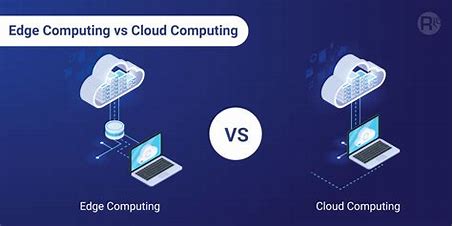
Edge Computing vs. Cloud Computing: Which is Best for Your Business in 2024?
Created on 9 December, 2024 • Technolgy • 21 views • 2 minutes read
In today's digital-first world, businesses are increasingly relying on computing technologies to streamline operations, improve efficiency, and scale their services.
What is Edge Computing?
Edge Computing is a decentralized computing framework that brings data processing closer to the source of data generation—devices, sensors, or local servers. This approach is beneficial in situations where latency, real-time decision-making, and data security are critical. By processing data on-site or at nearby edge servers, businesses can reduce network congestion and improve performance.
Key Features of Edge Computing:
- Low Latency: Ideal for real-time data processing, where speed is critical (e.g., autonomous vehicles, industrial automation).
- Data Privacy & Security: Localized data processing reduces the risk of exposure during transmission.
- Optimized for IoT: Perfect for Internet of Things (IoT) devices generating massive amounts of data.
What is Cloud Computing?
Cloud Computing, on the other hand, relies on centralized data centers and offers on-demand access to computing resources (like storage, processing power, and software) over the internet. Major players like AWS, Microsoft Azure, and Google Cloud dominate the cloud space. Cloud computing is designed for scalability, flexibility, and cost-efficiency, making it suitable for applications where high-performance computing and storage are essential but real-time response isn't as urgent.
Key Features of Cloud Computing:
- Scalability: Easily adjust computing resources based on demand, allowing for seamless growth.
- Cost-Effectiveness: Pay only for what you use, reducing upfront capital expenses for hardware.
- Global Reach: With data centers worldwide, businesses can serve users anywhere with minimal effort.
When to Use Edge Computing?
Edge Computing is best suited for industries that require real-time decision-making or work in remote locations where connectivity is inconsistent. Examples include:
- Healthcare: Real-time monitoring of patient vitals with wearable devices.
- Manufacturing: On-site processing for smart factory applications.
- Automotive: Self-driving cars that need immediate responses based on environmental factors.
When to Use Cloud Computing?
Cloud Computing is ideal for applications that do not require immediate data processing or when scalability is a key concern. Examples include:
- Big Data Analytics: Processing large datasets in centralized data centers.
- Software as a Service (SaaS): Delivering web-based software applications to users globally.
- Backup and Storage: Storing vast amounts of data without worrying about hardware management.
Which Technology Should You Choose?
The choice between Edge Computing and Cloud Computing depends on the specific needs of your business:
- Use Edge Computing if your business relies on low latency, real-time data processing, or works in remote environments.
- Use Cloud Computing if scalability, flexibility, and cost-efficiency are more important than immediate data processing.
For many businesses, the best approach might be a hybrid model, utilizing both edge and cloud technologies to balance real-time processing with the power of centralized cloud storage and analytics.
Conclusion: Embrace the Future of Computing
In 2024, both Edge Computing and Cloud Computing are pivotal in reshaping how businesses manage data, enhance customer experiences, and build innovative applications. By understanding their strengths and weaknesses, you can choose the technology that aligns best with your business goals. Whether you're streamlining operations with real-time data processing at the edge or scaling your resources in the cloud, embracing these technologies will position your business for success in the future.
Popular posts
-
Coin Master free spins & coins daily links January 2023Games • 2,960 views
-
AI in Healthcare: Advancements and ChallengesTechnolgy • 1,764 views
-
7 Simple Steps to Rank Number 1 in Google SearchTechnolgy • 1,434 views
-
E-commerce EvolutionTechnolgy • 1,136 views
-